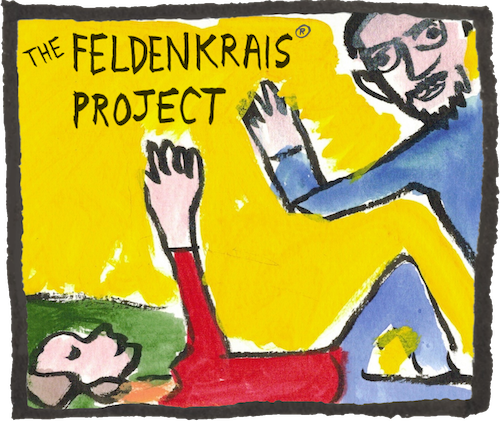Have a bath towel nearby to fold for head support. You’ll want to adjust its thickness frequently to accommodate the lesson’s different body positions and movements.
Said in the recording and the lesson title, but worth repeating: comfort first! Take good care of your lumbar or anywhere else that is resistant to twisting. It’s not necessarily to make large movements in this lesson. Your comfortable range will expand but let it happen organically, not by force or stretching.
It’s always reasonable to place something between your knees in side-lying lessons, if needed. If this better enables you to sweep your skyward arm back behind you without lifting your knee, it’s not cheating.
As one student pointed out in discussion, if you’re experiencing a lot of discomfort as a background to your study, you might translate “just what’s comfortable” to another phrase: “just what’s curious and doesn’t increase discomfort.” In some situations this is the best quality we can find to work with, at least at first. As you explore, follow any little pleasures that emerge, even pausing the recording to play with them.
After the lesson some women in the class had a discussion about breasts in certain aspects of this lesson. When I ask you to find the bottom of your sternum while lying on your side and twisted back, if breast tissue is in the way, start from higher on your sternum, working your way down if possible.
Additionally several women commented in the Zoom text chat about choosing to wear less restrictive bras for ATM study. Some suggested no bra.
While tricky, it may be very interesting to reverse all the lefts and rights on a subsequent exploration of this lesson.
There’s a lovely final variation we didn’t have time for: back-lying, knees bent or legs long, arms open wide, simply think of moving your sternum alternately toward one hand and the other. How does your whole axis—and your whole body and spatial attention—support this?
There are subtle and interesting connections to the Long Belly, Strong Back and Head Under the Gap sequence of lessons. As you turn into the ground from side-lying, how can your sternum lift forward and up, away from your lengthening abdomen? The entire exploration encourages and benefits from a light, distributed extension through your whole axis: head, sternum, spine, and pelvis.
This lesson is found in Patron Treasures, our collection of lessons exclusively for Feldenkrais Project Patron-level donors.
It was recorded in our Pay-What-You-Can Weekly Class on June 25, 2024, then edited to improve flow, clarity, and audio quality.
Members and Patrons. Learn more or login:
Members and Patrons. Learn more or login:



